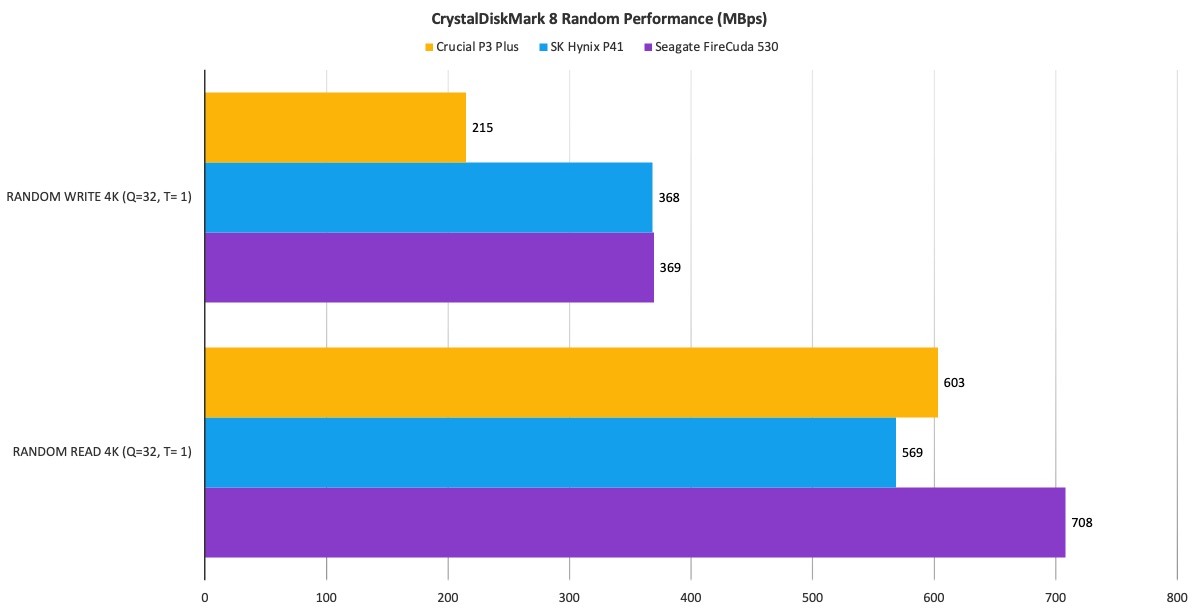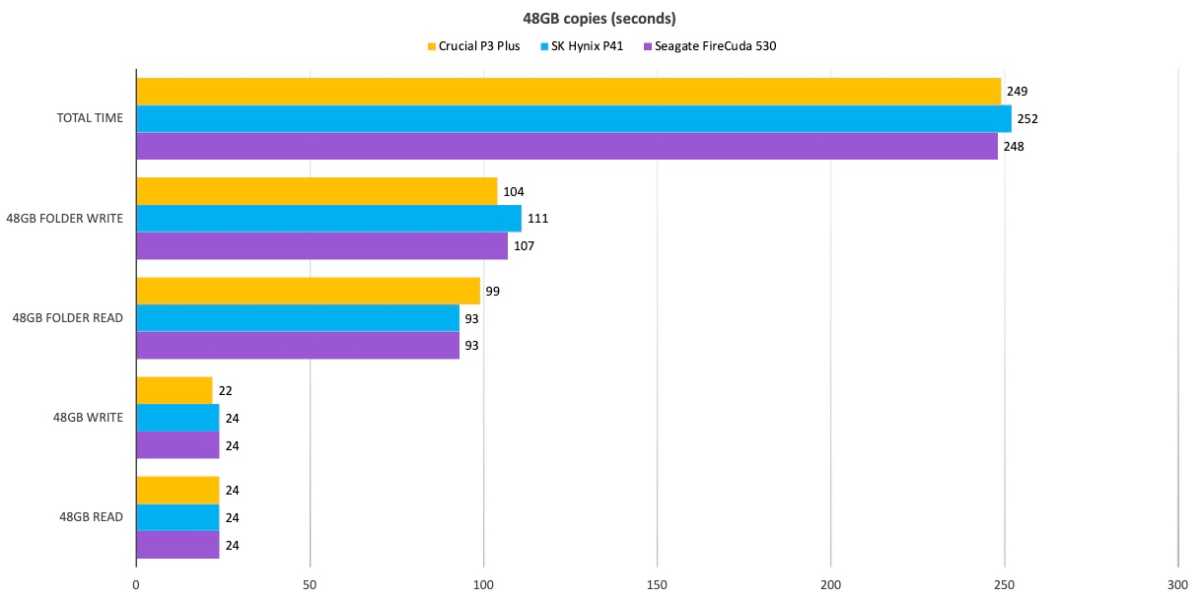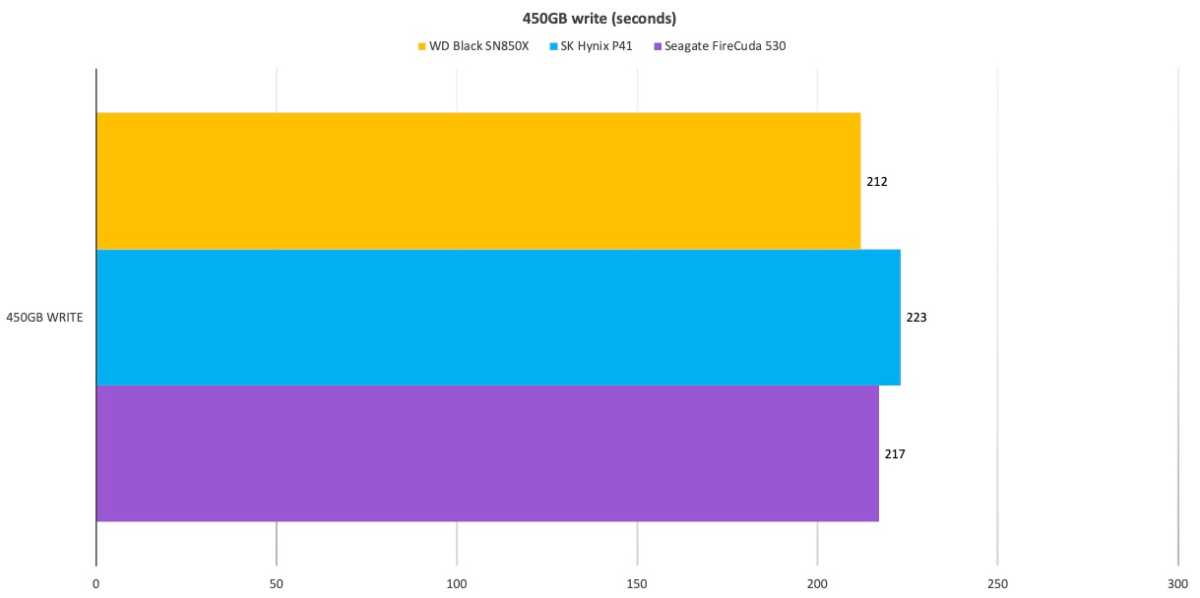Crucial P3 Plus SSD review: Fast enough and affordable

 Image: Crucial
Image: CrucialAt a glance
Expert’s Rating
Pros
Super affordableGood PCIe 4 performanceExcellent PCIe 3 performance
Cons
Second-tier performance overallExtremely low TBW ratings
Our Verdict
Though not a top-tier PCIe 4 performer, the P3 Plus is fast in the real world and we can’t argue with 4TB for $400, despite disturbingly low TBW ratings.
Price When Reviewed
500GB/$60 | 1TB/$100 | 2TB/$190 (tested) | 4TB/$400
Best Prices Today: Crucial P3 Plus NVMe SSD
RetailerPriceCrucial$26.99View Deal

 $53.99View Deal
$53.99View Deal $55.99View DealPrice comparison from over 24,000 stores worldwideProductPricePrice comparison from Backmarket
$55.99View DealPrice comparison from over 24,000 stores worldwideProductPricePrice comparison from Backmarket
Crucial’s P3 Plus didn’t set our testbed ablaze with its performance, but it’s still an NVMe drive, meaning it’s still stupid-fast in the grand scheme of storage things. Plus, what it lacks in performance, it makes up for in price. The 4TB version is only $400, or about half of what a top-tier NVMe SSD of that capacity costs.
This review is part of our ongoing roundup of the best SSDs. Go there for information on competing products and how we tested them.
Crucial P3 Plus: Design and features
The P3 Plus is a DRAM-less design that takes advantage of NVMe’s HMB (Host Memory Buffer) feature to utilize a small portion of your computer’s memory for caching. That effectively caps performance, but as I said, even a slower NVMe SSD is extremely fast.
I already talked about the big-dog 4TB drive for $400, but the P3 Plus is also available in 500GB/$60, 1TB/$100, and 2TB/$190 flavors. All use Micron’s 176-layer, QLC (Quad-Level Cel/4-bit) NAND and a Phison E21T controller.

Again, there’s no DRAM cache and secondary caching is writing the QLC as SLC (Single-Level Cell/1-bit). The Phison controller will utilize up to 20 percent of the free NAND for that purpose. As to form factor, the P3 Plus is a standard 2280 (22x80mm), PCIe 4 x4 NVMe SSD.
Alas, Crucial exhibits a startling lack of faith in the P3 Plus if you go by the TBW (terabytes to be written) ratings: 110TBW on the 500GB, 220TBW on the 1TB, 440TBW for the 2TB, and 800TBW on the 4TB. These are the limit on the five-year “limited” warranty. Crucial’s TBWs have historically run towards the lean side, but these are around one-third of the norm.
The odds are you can write 10 times these ratings, or more, but Crucial’s policy makes you wonder.
Crucial P3 Plus: Performance
On synthetic benchmarks, the P3 Plus was the slowest NVMe SSD we’ve tested on our new testbed. Happily, in our real-world tests and copies, it was far better. You can see the P3 Plus’s deficit in CrystalDiskMark 8’s sequential throughput test.
Crucial informed me that they achieved the higher numbers you see on the company’s website with smaller data sets. We test with CDM8’s 64GB data set.

Random performance wasn’t a whole lot better, though the P3 Plus did better than the SK Hynix P41 in random reading.

Total all the results and the story is the same: The P3 Plus is a slower SSD. Notice we said slower, not slow.

Where things picked up was in our real-world transfer tests. Windows itself tends to be a mitigating factor in these copies, and will be until Direct Storage arrives on the scene.

Our 450GB write test turned out a nice result. With 2TB to play with, there was plenty of NAND to use as secondary cache. However, once you exceed this, write speeds will plummet due to the relatively slow write performance of QLC NAND.

So the P3 Plus is no barn burner among NVMe SSDs. It still seeks 10 times faster than SATA SSDs, and reads and writes dozens of times faster than any hard drive. It’s fast—it’s just not as fast as others in the benchmarks.
Internal drive tests currently utilize Windows 11 64-bit running on an MSI MEG X570/AMD Ryzen 3700X combo with four 16GB Kingston 2666MHz DDR4 modules, a Zotac (Nvidia) GT 710 1GB x2 PCIe graphics card, and an Asmedia ASM3242 USB 3.2×2 card. Copy tests utilize an ImDisk RAM disk using 58GB of the 64GB total memory.
Each test is performed on a newly formatted and TRIM’d drive so the results are optimal. Over time, as a drive fills up, performance will decrease due to less NAND for caching and other factors. The performance numbers shown apply only to the drive of the capacity tested. SSD performance can vary by capacity due to more or fewer chips to shotgun reads/writes across and the amount of NAND available for secondary caching.
Bottom line
If you want a lot of NVMe storage for not a lot of money (relatively speaking), then currently, the Crucial P3 Plus is what you’re looking for. The performance won’t be fantastic all the time, but again, this is NVMe, and unless you really stress the drive to the point where it runs out of secondary cache, you’ll likely never notice. It’s a real bargain.
Best Prices Today: Crucial P3 Plus NVMe SSD
RetailerPriceCrucial$26.99View Deal

 $53.99View Deal
$53.99View Deal $55.99View DealPrice comparison from over 24,000 stores worldwideProductPricePrice comparison from Backmarket
$55.99View DealPrice comparison from over 24,000 stores worldwideProductPricePrice comparison from Backmarket
Author: Jon L. Jacobi, Freelance contributor

Jon Jacobi is a musician, former x86/6800 programmer, and long-time computer enthusiast. He writes reviews on TVs, SSDs, dash cams, remote access software, Bluetooth speakers, and sundry other consumer-tech hardware and software.
Recent stories by Jon L. Jacobi:
Samsung 990 Pro SSD review: Mighty fast, but not a bargainAdata Legend 960 1TB NVMe SSD review: Top-tier performance, mid-tier priceMicrosoft Remote Desktop Connection review: Free, native remote control





